Mycenae, Peloponnese, Greece – 2/2014
Going way back to Greek history classes in high school, Monika has a vivid memory of the Lion Gate at Mycenae, so naturally this was a must-see stop. In the second millennium BC, Mycenae was one of the major centers of Greek civilization, a military stronghold that dominated much of southern Greece. According to legend and mythology, Mycenae was founded by Perseus, son of Zeus and Danaë, daughter of Acrisios, king of Argos.
We found a comfortable campsite in today’s Mycenae at Atreus Camping, (atreus@otenet.gr), and though not officially open, we were allowed to plug in and use their Wi-Fi Internet. We needed electricity to keep our batteries and computers charged. With the inclement weather, our solar panels were not putting out 100%. A small grocery store was nearby so we were set for a week of catching up on overdue blogs and emails once again.
There is a long history of Mycenae starting in Neolithic times, but going back to Homer’s Odyssey, the King of Mycenae was Agamemnon, married to Clytemnestra. His brother Menelaus, King of Sparta, was married to her beautiful sister Helen, (the infamous Helen of Troy). Helen ran off, (abducted?), with Paris of Troy. (Pay attention now. There will be a short quiz at the end.)
The legend gets quite juicy, right out of the Dallas TV series. Three goddesses, Hera, Athena and Aphrodite quarreled over which of the three was the fairest. The judge, Paris, the handsome son of the Trojan king Priam, decided in favor of Aphrodite, and as a reward, was promised the most beautiful woman in the world, Helen, who inconveniently happened to be the wife of king Menelaos of Sparta. Understandably pissed off by her abduction, Menelaos gathered 1,186 ships and over 100,000 men from 22 different states and principalities, under the command of Agamemnon, who you may recall was king of Mycenae, and set off to get his wife back. That was the start of the siege of Troy on today’s Turkish coast, a 10-year war as described in Homer’s Iliad. Returning home, there was no ticker parade. Agamemnon himself was brutally murdered in his bathtub by his wife and her lover! Bummer huh? Never trust a woman.
We did spend a day touring the museum, rambling around the famous Mycenae citadel ruins and the impressive huge domed tombs, but we did not find that infamous bathtub of Agamemnon!
Controversial German archaeologist, Heinrich Schliemann, believed in the historical truth of Homer’s books and interpreted the site accordingly. He excavated the area extensively, sometimes without permission. Upon discovering an ancient Tholos or “beehive” grave with a royal skeleton who’s skull was covered with a golden mask, he declared: ”I have gazed upon the face of Agamemnon”. It turned out to be a royal from a different time period.
And yes, the Lion Gate was even more impressive than the black and white picture in Monika’s history book.
- Back in the 2nd millennium BC Mycenae was one of the major military strong holds in Greece. While it appears to be a pile of rocks now, it was worth a closer look.
- The famous Lion gate had weathered thousands of years and was as impressive as Monika remembered from Greek history class in high school.
- We both were totally in awe at the size of the rocks that these people moved thousands of years before impressive sites like Machu Picchu and Sacsayhuaman in Peru were developed. How did they do it?
- This grave circle which contained six shaft graves forms part of an extensive cemetery and was used exclusively for royal burials during the 16th century BC.
- The view from the ramparts of Mycenae was just what you want if you were going to be king of a kingdom.
- We explored one of the deep cisterns that were part of the complicated water system incorporated into Mycenae.
- During excavation many tombs with offerings for an afterlife were discovered.
- The Tholos or “beehive” tombs built around the middle of the 14th century BC are some of the most splendid documents of Mycenaean architecture. Unfortunately, they were all robbed and therefore no information exists on either the grave goods nor the burials they once housed.
- The interiors of these gigantic cone-shaped burial tombs were truly an amazing work of engineering.
- Many of the stirrup jars found actually originated from the island of Crete indicating large-scale exchanges with the Minoans.
- German archaeologist Heinrich Schliemann discovered the royal skeleton whose skull was covered with a golden mask. He declared: “I have gazed upon the face of Agamemnon.”
- Many examples of necklaces and bracelets were discovered.
- These Sphinx votives from a house shrine are dated the end of the 6th century BC.
- These interesting decorative weights were designed to keep the women’s gowns from blowing in the wind.
- Several cooking utensils like this small mortar and pestle were part of the extensive collection of kitchen tools found during excavations.
- While laying the foundation of the Mycenae museum, seven tombs were discovered among them the burial of a 30-year old male. Twenty unused double axes were found in two compact layers in front of his feet. It is possible that he was a metallurgist who was buried with the stock of his workshop. (1150 BC)
- Metallurgy was already highly developed during the Mycenaean times as evidenced by the knives, spears and axes found.



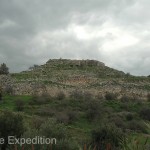
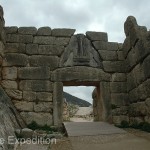
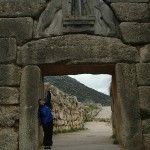
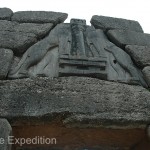
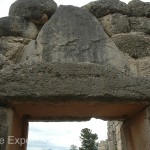
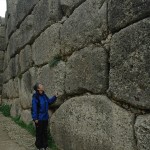
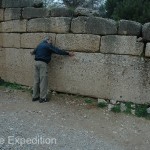
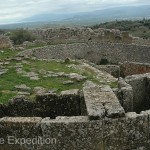
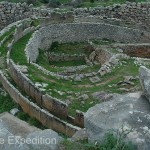
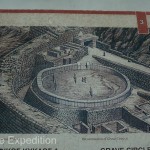
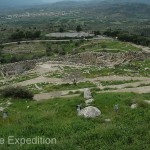

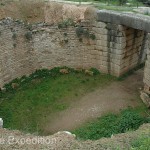
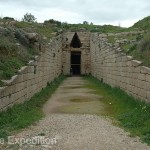
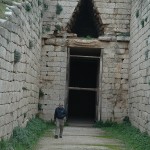
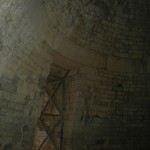
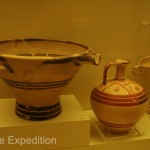

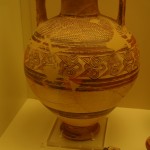
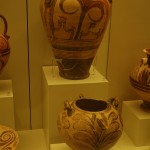
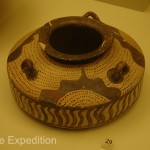
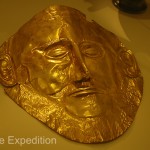
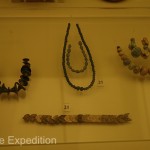
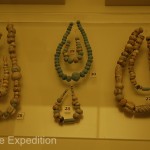


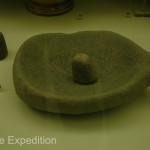







Leave a Comment